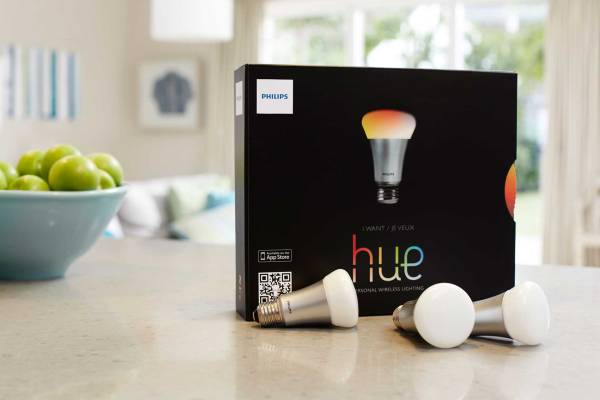Philips Hue is a lighting system that changes the definition of what your standard home lighting setup is, and now there’s an official developer program for the innovative Wi-Fi-connected bridge and bulbs, so that third-party apps and hardware can pick up what Philips has started.
To be clear, people have developed apps for the Philips Hue system already; we covered one two Hue hacks just last week, including an iOS app that turn your Hue home lighting into a dance party, and a software add-on for Minecraft that changes your ambient lighting to match the day/night cycle in the world building game. But those, and other Philips apps to date, have been built mostly by developers who are reverse engineering their own solution.
Philips recognized that devs wanted to do different things with the Hue, and decided to help them out, by opening up an official developer program, complete with an SDK for iOS developers, and APIs that allow both software and hardware makers to take advantage of the Hue’s connected features. The official tool means that developers can depend on it as a stable channel through which to build Hue integration into their products.
Hue uses the ZigBee standard for home automation, which means that they can talk to each other, as well as motion detectors, connected thermostats, connected appliances and more. The new developer program will mean that hardware makers using these standards can build in Hue-compatible features, so that the lights can be triggered by various actions. You could have a specific light recipe come on whenever you open the door, for instance, or when a thermostat is set to specific climate setting.
Other potential uses of the developer tools include apps for amateur and professional photographers, which could help them optimize lighting for a shoot with a simple app attached to a device with light level detection capabilities. Philips also plans to release future features around geo-fencing, scheduling and other smartphone sensor capabilities that could expand what developers can do with them.
“We’re now at a point where there are already about 10 applications that have been shared and built from the unofficial developer community for new applications around Hue,” explained George Yianni, HUe System Architect in an interview. “Now what we want to do as Philips is we actually want to help and grow and encourage this community, and give them tools and proper documentation. Also, we want to give them commitment that this is the API and we’re going to support it and it won’t change overnight.”
Yianni says that’s been the big roadblock stopping bigger developers and companies from creating apps and accessories for Hue so far. Specifically, it’s been holding up hardware development, he says, and that means you can probably expect to see some big names start to integrate Hue into their own lines of connected home devices.
The developer tools will be available free to anyone who wants to create applications and devices that connect to the Hue system. Philips will also continue to work on expanding the Hue line, Yianni said, with new lightbulb types to follow soon. With new third-party investment in the Hue ecosystem, as well as more from Philips itself, it’s about to become a lot more than just a different kind of lightbulb.
